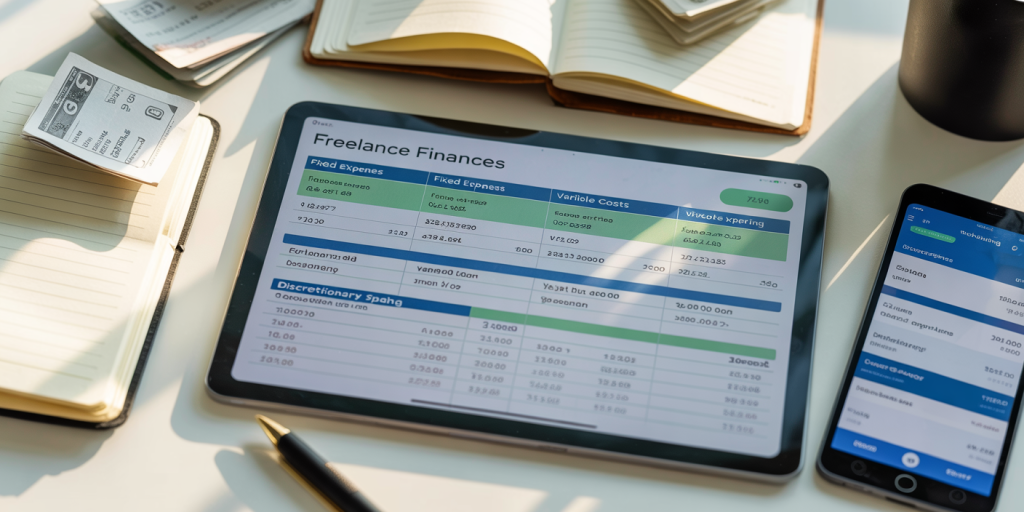The rise of the gig economy has transformed the traditional job landscape, with freelancing becoming a popular work model worldwide. According to a 2023 report by Upwork, over 59 million Americans freelanced last year, contributing nearly $1.4 trillion to the economy. This shift offers flexibility and independence but also presents unique financial management challenges, especially due to the lack of a fixed monthly income. Managing finances without a steady paycheck requires strategic planning, disciplined budgeting, and smart savings to maintain stability amid fluctuating earnings.
This article addresses practical financial management strategies tailored for freelancers. By understanding income variability, prioritizing expenses, saving for taxes and emergencies, and leveraging technological tools, independent workers can achieve financial security and growth. Real-world cases and documented statistics highlight effective approaches that freelancers can adopt to thrive despite income inconsistency.
—
Understanding Income Variability in Freelancing
Freelance income is inherently irregular, often influenced by market demand, client acquisition, and seasonal fluctuations. Unlike salaried employees, freelancers do not receive predictable paychecks, making monthly budgeting complex.
For instance, consider Sarah, a freelance graphic designer who earns anywhere from $1,500 to $5,000 per month depending on the number of clients and project scope. During peak months, she takes on multiple projects, while some months only yield minimal or no income. This variability requires a flexible yet robust financial plan that accounts for lean periods.
Data from the Freelancers Union (2023) indicates that 60% of freelancers experience significant income fluctuations, with 40% reporting challenges in managing these irregular earnings effectively. A crucial step is to track income meticulously through income logs or financial software. Detailed tracking not only clarifies earning patterns but also helps in anticipating cash flow gaps and planning accordingly.

—
Creating a Realistic and Flexible Budget
Budgeting without a fixed paycheck demands comprehensive planning and adaptability. Unlike traditional budgets based on consistent income, freelancers must create budgets around their lowest expected monthly income to avoid overspending.

Take Tim, a freelance writer who calculated his average low-earner month at $2,000. He structures his budget around this amount, ensuring essential expenses such as rent, utilities, and groceries are covered. Any earnings beyond that baseline go towards discretionary spending or savings. This method prioritizes core living costs and safeguards against debt during slow periods.
A practical way to implement this is by categorizing expenses into fixed, variable, and discretionary categories. Fixed expenses like rent or loan payments remain constant, variable expenses such as utilities or groceries fluctuate, while discretionary spending encompasses non-essential purchases. Allocating funds first to fixed and mandatory variable costs ensures basic needs are met before indulgences.
| Expense Category | Description | Example Items | Management Strategy |
|---|---|---|---|
| Fixed Expenses | Regular monthly commitments | Rent, insurance, subscriptions | Budget around minimum income |
| Variable Expenses | Costs that vary monthly | Utilities, groceries | Monitor and adjust monthly |
| Discretionary Expenses | Non-essential expenditures | Dining out, entertainment | Limit during lean months |
This classification helps freelancers to adjust spending dynamically, maintaining sustainability even in months with lower income.
—
Saving for Taxes and Emergency Funds
One critical aspect freelancers often overlook is the obligation to pay taxes quarterly and the necessity of building an emergency fund. Without employer withholding, freelancers must proactively set aside money to fulfill tax liabilities and cover unexpected expenses.
According to the IRS, self-employed individuals must pay estimated taxes quarterly, covering income tax as well as the self-employment tax (which includes Social Security and Medicare contributions). Sarah, the graphic designer mentioned earlier, sets aside 30% of each payment she receives into a designated tax account. This habit ensures she never scrambles to find funds when taxes are due.
Similarly, establishing an emergency fund equivalent to 3-6 months of living expenses is essential. For freelancers like Tim, this translates to saving between $6,000 and $12,000, based on his baseline monthly costs. This buffer provides a financial cushion during periods of low or no income and protects against unforeseen emergencies such as equipment breakdowns or health issues.
Financial planners often recommend automating these savings transfers to avoid oversight. Utilizing separate high-yield savings accounts for tax and emergency funds can help maintain transparency and discipline.
—
Leveraging Technology and Financial Tools
Managing fluctuating freelance income is easier when supported by modern technology designed for financial organization. Numerous apps and software platforms help freelancers track earnings, invoice clients, monitor expenses, and even save systematically.

For example, platforms like QuickBooks Self-Employed and FreshBooks enable freelancers to connect bank accounts, categorize expenses, and estimate quarterly taxes automatically. Additionally, apps such as Honeydue and YNAB (You Need a Budget) aid in budget creation and expense tracking.
Case in point: Jamie, a freelance consultant, credits YNAB for helping her move from constantly scrambling to manage money to having a clear picture of monthly cash flows. She uses categories informed by her flexible budget and adjusts them as income varies, enabling smarter spending decisions.
Moreover, freelancing platforms themselves often provide analytics and payment tracking tools. For instance, Upwork and Fiverr offer detailed earning reports and tax documentation aids, simplifying financial reporting and planning.
—
Diversifying Income Streams to Stabilize Earnings
Diversifying income sources is a strategic way freelancers can reduce financial volatility. Relying heavily on a single client or type of project exposes freelancers to risk if the client base shrinks or market demand shifts.
Many successful freelancers incorporate multiple revenue streams. For example, Maria, a freelance photographer, earns through direct client shoots, stock photo sales, online workshops, and affiliate marketing. This mix balances unpredictable client projects with passive income and scheduled courses, stabilizing monthly earnings.
Statistics support this approach—according to a Payoneer survey (2022), freelancers who diversified income through 3+ sources reported 25% higher annual earnings and 40% lower income volatility than those relying on a single source.
| Freelancer Profile | Income Streams | Monthly Earnings Estimate | Pros | Cons |
|---|---|---|---|---|
| Single-source Freelancer | One or two regular clients | $2,500 | Simplicity, client relationship focus | High risk, income fluctuation |
| Multi-source Freelancer | Diverse projects, passive income | $3,000 – $5,000 | Income stability, wider market reach | Time management complexity |
While diversifying requires effort and management, the financial payoff and risk reduction significantly outweigh the challenges.
—
Future Perspectives: Financial Strategies for the Evolving Freelance Economy
As freelancing continues to grow globally, financial strategies must evolve in tandem. The emergence of decentralized finance (DeFi) and blockchain technology offers new possibilities for freelancers, such as instant payments, reduced transaction fees, and decentralized financial products tailored to irregular earners.
Additionally, the proliferation of AI-powered income forecasting tools aims to analyze market trends and individual performance patterns, offering freelancers customized financial advice and proactive budget adjustments. Online communities and peer networks are also enhancing knowledge sharing and collective bargaining power, which can aid in securing fair compensation and financial literacy.
From a macroeconomic perspective, governments and financial institutions may begin offering specialized products like income smoothing loans or tax relief programs for freelancers to mitigate the instability of fluctuating income.
In terms of personal finance, continuous education around investing, retirement planning, and insurance tailored for freelancers will empower independent workers to build lasting financial security. The financial habits established now, including disciplined budgeting and savings, will become even more critical as freelance work integrates deeper into the global economy.
—
Freelancing provides incredible autonomy but demands meticulous financial management to succeed. By understanding income variability, creating adaptable budgets, preparing for taxes and emergencies, leveraging technology, and diversifying income sources, freelancers can navigate the uncertainty of irregular paychecks and build resilient financial foundations. Embracing future innovations and educational resources will further empower independent professionals to thrive in this dynamic work environment.